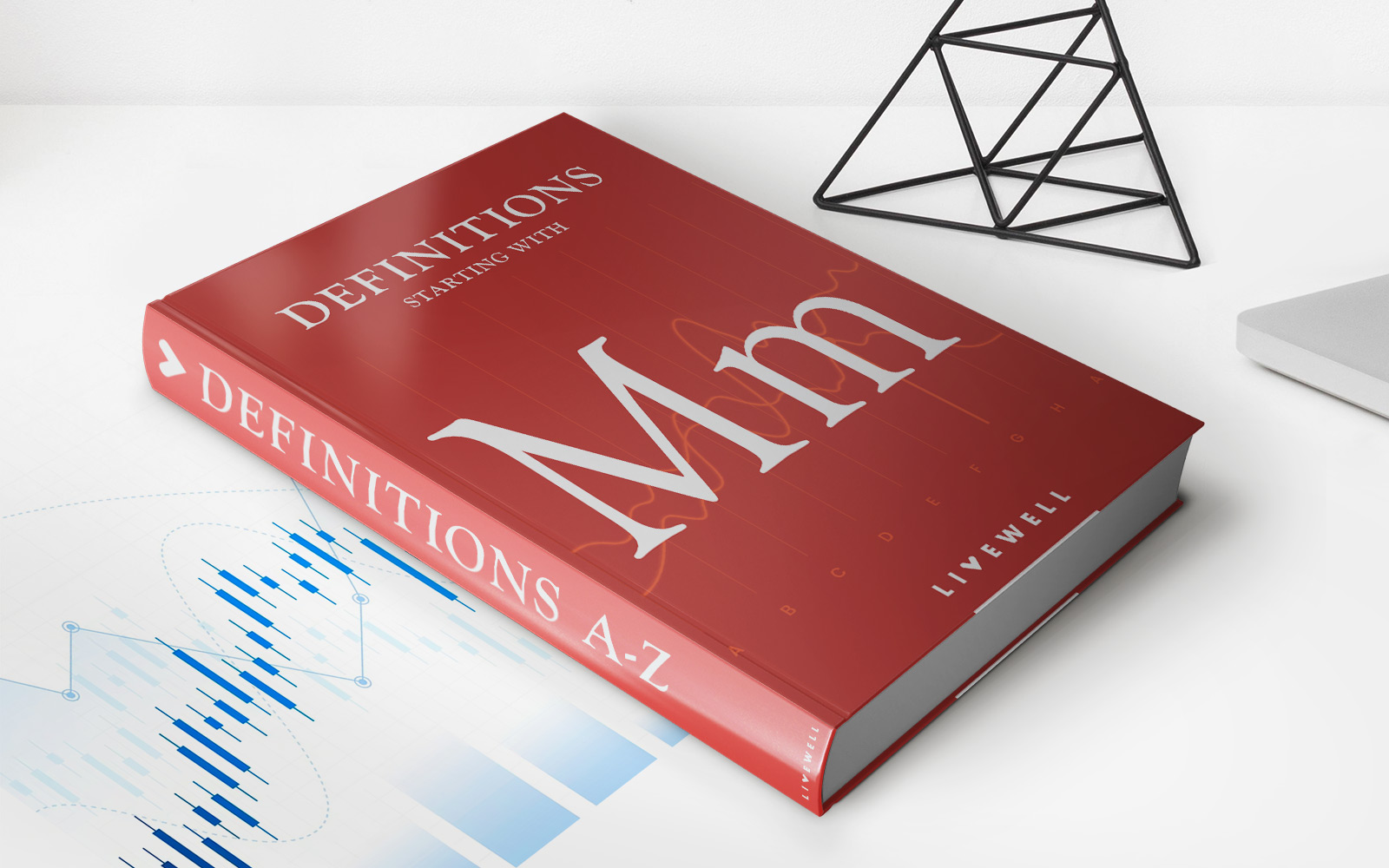

Finance
What Is DPI In Private Equity
Published: January 22, 2024
Learn about DPI in private equity and its significance in finance. Understand how DPI impacts investment returns and portfolio performance.
(Many of the links in this article redirect to a specific reviewed product. Your purchase of these products through affiliate links helps to generate commission for LiveWell, at no extra cost. Learn more)
Table of Contents
Introduction
Understanding DPI (Distributions to Paid-in)
Private equity investments are a key component of many sophisticated investment portfolios. Understanding the performance metrics used in this asset class is crucial for investors and fund managers alike. One such metric that holds significant importance in the realm of private equity is DPI, which stands for Distributions to Paid-in. DPI is a vital measure that provides insights into the success and profitability of a private equity fund. In this article, we will delve into the intricacies of DPI, its significance, factors affecting it, and the method of calculating it.
DPI is a metric that measures the amount of capital that has been returned to limited partners in a private equity fund, relative to the amount of capital contributed by the limited partners. It is a fundamental gauge of a fund's performance and is often used to assess the effectiveness of the fund manager in generating returns for investors. By comprehending DPI and its implications, investors can make informed decisions and gauge the success of their private equity investments.
Stay tuned as we explore the nuances of DPI in private equity, its importance, factors influencing it, and the methodology for calculating this pivotal metric. Whether you are a seasoned investor or someone looking to venture into the world of private equity, gaining a comprehensive understanding of DPI is essential for navigating this complex and rewarding investment landscape.
Understanding DPI (Distributions to Paid-in)
DPI, or Distributions to Paid-in, is a critical metric used in the realm of private equity to evaluate the performance and success of a fund. It represents the amount of capital that has been distributed to limited partners in a private equity fund, relative to the total capital contributed by the limited partners. This metric serves as a key indicator of the fund’s profitability and the efficiency of the fund manager in generating returns for investors.
When a private equity fund starts to return capital to its limited partners, it signifies that the fund’s investments have been successful in generating profits. DPI reflects the extent to which the fund has been able to realize gains and distribute them to investors. A DPI ratio greater than 1 indicates that the fund has returned more capital to its investors than they initially contributed, signifying a profitable investment. On the other hand, a DPI ratio below 1 implies that the fund has not yet distributed sufficient capital to cover the investors’ contributions.
It is important to note that DPI is a lagging metric, meaning that it provides insights into the historical performance of the fund rather than its current or future prospects. However, despite its retrospective nature, DPI is a valuable tool for investors and fund managers to assess the success of their investments and make informed decisions regarding future allocations.
Understanding DPI is crucial for investors as it enables them to gauge the effectiveness of the fund manager in realizing returns and efficiently distributing profits. For fund managers, DPI serves as a performance benchmark, allowing them to evaluate the success of their investment strategies and make adjustments as necessary to enhance future performance.
As we continue our exploration of DPI in private equity, we will delve deeper into its significance, the factors that influence it, and the methodology for calculating this pivotal metric. By gaining a comprehensive understanding of DPI, investors and fund managers can navigate the complexities of private equity investments with greater confidence and acumen.
Importance of DPI in Private Equity
The significance of DPI, or Distributions to Paid-in, in the realm of private equity cannot be overstated. This metric holds immense importance for both investors and fund managers, serving as a crucial gauge of a fund’s profitability and the effectiveness of its investment strategies.
For investors, DPI provides valuable insights into the success of their private equity investments. A high DPI ratio indicates that the fund has been able to distribute significant profits to its limited partners, showcasing the fund’s ability to generate returns on investments. This, in turn, allows investors to assess the performance of the fund manager and make informed decisions regarding future allocations of capital. Furthermore, DPI serves as a measure of liquidity for investors, indicating the extent to which they can expect to receive returns on their investments.
From the perspective of fund managers, DPI is a key performance metric that reflects the success of their investment decisions and the overall performance of the fund. A high DPI ratio signifies that the fund manager has effectively realized gains from investments and distributed them to investors, demonstrating their proficiency in generating returns. This metric also aids fund managers in evaluating the effectiveness of their investment strategies and making strategic adjustments to optimize future performance.
Moreover, DPI plays a pivotal role in assessing the overall health and success of a private equity fund. It provides a clear indication of the fund’s ability to generate profits and distribute returns to investors, thereby influencing the fund’s reputation and attractiveness to potential limited partners. A strong DPI ratio can enhance the fund’s appeal to prospective investors, showcasing its track record of delivering profitable returns and effectively managing investments.
By comprehending the importance of DPI in private equity, investors and fund managers can make informed decisions, assess the performance of their investments, and strategically steer their future investment endeavors. As we delve deeper into the intricacies of DPI, it becomes evident that this metric serves as a cornerstone for evaluating the success and profitability of private equity funds, ultimately shaping the landscape of this dynamic investment domain.
Factors Affecting DPI
The Distributions to Paid-in (DPI) ratio in private equity is influenced by a myriad of factors that collectively shape the fund’s ability to realize gains from investments and distribute profits to investors. Understanding these factors is crucial for investors and fund managers as they navigate the complexities of private equity investments and assess the performance of their portfolios.
One of the primary factors impacting DPI is the timing and magnitude of investment realizations. The speed at which the fund is able to exit investments and realize gains significantly influences the DPI ratio. Investments that yield substantial profits and are exited expediently contribute to a higher DPI, indicating the fund’s ability to generate returns and distribute capital to limited partners.
Furthermore, the overall performance of the fund’s investment portfolio plays a pivotal role in determining DPI. Successful investments that yield substantial profits contribute to a higher DPI ratio, reflecting the fund’s ability to generate returns for investors. Conversely, underperforming investments can hinder the fund’s ability to distribute profits, thereby impacting the DPI ratio.
The fund’s capital deployment strategy also affects DPI. Efficiently deploying capital into high-yielding investments can contribute to a higher DPI ratio, as it reflects the fund’s ability to generate profits and distribute returns to limited partners. Conversely, a suboptimal capital deployment strategy may impede the fund’s ability to realize gains and distribute profits, consequently affecting the DPI ratio.
Moreover, the fee structure of the private equity fund can influence DPI. High management fees and carried interest can impact the amount of capital available for distribution to limited partners, thereby affecting the DPI ratio. A fee structure that prioritizes the fund manager’s interests over those of the limited partners can impact the overall profitability of the fund and subsequently influence the DPI ratio.
Additionally, economic conditions and market dynamics can impact DPI. Fluctuations in the financial markets, industry-specific trends, and macroeconomic factors can influence the fund’s ability to exit investments at favorable valuations, consequently affecting the DPI ratio.
By comprehensively understanding the factors that influence DPI in private equity, investors and fund managers can strategically assess the performance of their portfolios, optimize investment strategies, and make informed decisions regarding future allocations. As we unravel the intricacies of DPI, it becomes evident that these multifaceted factors collectively shape the fund’s ability to realize gains and distribute profits, ultimately impacting the DPI ratio and the overall success of the private equity fund.
Calculating DPI
Calculating the Distributions to Paid-in (DPI) ratio in private equity involves a straightforward yet insightful methodology that provides valuable insights into the fund’s performance and the returns realized by limited partners. The DPI ratio is computed by dividing the total distributions to limited partners by the total capital contributed by the limited partners.
The formula for calculating DPI is as follows:
DPI = Total Distributions to Limited Partners / Total Capital Contributed by Limited Partners
By utilizing this formula, investors and fund managers can assess the fund’s ability to generate profits and distribute returns to limited partners. The resulting DPI ratio provides a clear indication of the fund’s success in realizing gains from investments and effectively distributing profits.
It is important to note that DPI is a lagging metric, meaning that it reflects historical performance rather than current or future prospects. As such, the DPI ratio provides insights into the profitability of the fund’s realized investments and the distribution of profits to limited partners up to the point of calculation.
Furthermore, understanding the DPI ratio in conjunction with other performance metrics such as TVPI (Total Value to Paid-in) and RVPI (Residual Value to Paid-in) can provide a comprehensive assessment of the fund’s overall performance and the returns generated for investors.
By employing the DPI calculation methodology and interpreting the resulting ratio, investors and fund managers can gain valuable insights into the success and profitability of the private equity fund. This, in turn, enables informed decision-making, performance evaluation, and strategic adjustments to optimize future investment endeavors.
As we unravel the methodology for calculating DPI, it becomes evident that this fundamental metric serves as a cornerstone for evaluating the performance of private equity funds and provides a clear indication of the fund’s ability to realize gains and distribute profits to limited partners.
Conclusion
As we conclude our exploration of DPI (Distributions to Paid-in) in the context of private equity, it becomes evident that this metric holds immense significance in evaluating the success, profitability, and performance of private equity funds. DPI serves as a crucial gauge of the fund’s ability to realize gains from investments and distribute profits to limited partners, providing valuable insights for investors and fund managers alike.
Throughout this journey, we have delved into the intricacies of DPI, understanding its calculation methodology, and comprehending the factors that influence this pivotal metric. From the timing and magnitude of investment realizations to the fund’s capital deployment strategy and the impact of economic conditions, a myriad of factors collectively shape the DPI ratio, ultimately influencing the fund’s ability to generate returns for investors.
The importance of DPI cannot be overstated, as it serves as a performance benchmark for fund managers and a measure of success for investors. A high DPI ratio signifies the fund’s proficiency in realizing gains and efficiently distributing profits, showcasing its ability to generate returns on investments. This, in turn, influences the fund’s reputation and attractiveness to potential limited partners, shaping its trajectory in the dynamic landscape of private equity investments.
By gaining a comprehensive understanding of DPI and its implications, investors and fund managers can make informed decisions, assess the performance of their portfolios, and strategically navigate the complexities of private equity investments. DPI serves as a cornerstone for evaluating the success and profitability of private equity funds, ultimately guiding the trajectory of investment endeavors and shaping the dynamics of this dynamic and rewarding asset class.
As we embrace the multifaceted nature of private equity investments, DPI stands as a pivotal metric that empowers stakeholders to gauge the success of their investments, make strategic adjustments, and navigate the ever-evolving landscape of private equity with acumen and confidence.
With a profound understanding of DPI, investors and fund managers are equipped to embark on a journey of informed decision-making, performance assessment, and strategic optimization, ultimately shaping the trajectory of private equity investments and unlocking the potential for lucrative returns and enduring success.














